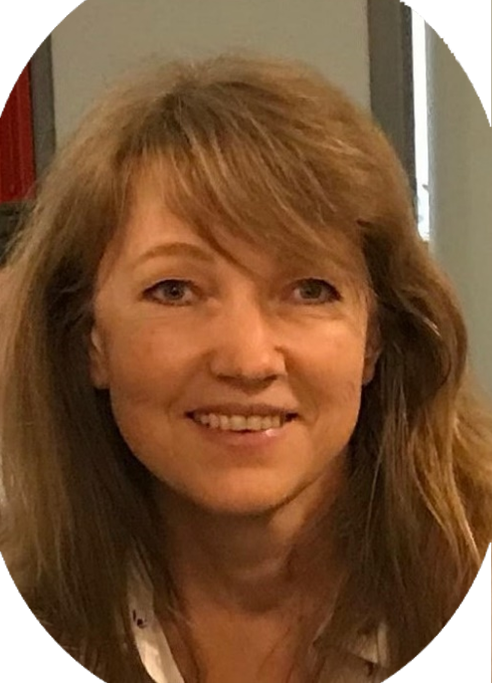SMOOTH AND NONSMOOTH MAPS: THEORY, NUMERICAL METHODS, AND APPLICATIONS TO ECONOMICS AND FINANCE
Milan
June 1st, 2023
Smooth and Nonsmooth Maps:
Theory, Numerical Methods, and Applications to Economics and Finance
Milan, Università Cattolica del Sacro Cuore, Aula NI 010, Via Nirone 15
program
Thursday, June 1 (CET time)
| 8:15-8:45 | Registration of the participants |
| 8:45-9:00 | Opening |
| 9:00-11:00 | Fabio Tramontana |
| Theory of Nonlinear Smooth Maps | |
| 11:00-11:30 | Coffee break |
| 11:30-13:00 | Iryna Sushko |
| Nonsmooth maps, continuous and discontinuous: theory and applications | |
| 13:00-14:00 | Launch break |
| 14:00-15:30 | Social event |
| 15:30-16:30 | Roberto Dieci |
| Nonlinear maps in economics and finance: supply, demand, expectations, and price dynamics | |
| 16:30-17:00 | Coffee break |
| 17:00-18:00 | Giulia Livieri |
| Heteroscedastic noise: Applications to financial systems | |
| 18:00 | Closing |
Abstracts of the contributions

|
Fabio Tramontana |
Theory of Nonlinear Smooth Maps
Nonlinear smooth maps in discrete time naturally arise in social modelling and other fields where the values of the variable cannot change continuously and the state of the system changes at discrete steps. The variables’ motion is driven by systems of difference equations where the next step value of each variable is obtained by using the previous steps values of the same and/or the other variables. In particular, nonlinear smooth maps permit to obtain periodic motion and even chaotic motion already in one dimension, differently from what happens with dynamical systems formulated via differential equations. We will explore the main bifurcation routes to complex dynamics with a particular focus on the coexistence among different attractors and the shapes of their basins of attraction, both in one and two dimensions.

|
Iryna Sushko |
Nonsmooth maps, continuous and discontinuous: theory and applications
Dynamical systems defined by piecewise smooth maps are nowadays actively studied by many researchers from both theoretical and applied fields. Indeed, since nonlinear dynamics theory has been mainly developed for smooth systems, many theoretical problems associated with nonsmooth functions are still open. Clearly, the nonsmoothness and, especially, the discontinuity of a system enriches its dynamics, leading to new interesting properties. On the other hand, there is a demand for a theory of piecewise smooth dynamical systems from the applied sciences because many important real world processes, characterized by a sharp switching between the states, cannot be represented adequately without the use of piecewise smooth functions. Such functions appear, for example, in modeling dynamics associated with electronic circuits with various kinds of switches, mechanical systems with impacts and/or dry friction, economic and financial processes with different constraints, etc. This lecture aims to present several analytical and numerical tools for studying the dynamics of one- and two-dimensional piecewise smooth maps, continuous and discontinuous, and to give examples of applied models from economics and finance where these tools are successfully used to describe and explain various observed phenomena.

|
Roberto Dieci |
Nonlinear maps in economics and finance: supply, demand, expectations, and price dynamics
Nonlinear smooth systems in discrete time offer the ideal framework to model the dynamic interplay between expectations, demand, supply and market prices in a variety of economic and financial settings characterized by agents' behavioral heterogeneity. Additionally, systems driven by nonsmooth maps can account for the existence of constraints or exogenous policy rules that may induce sharp changes in agents' behavior. This lecture aims to illustrate the effect of such nonlinear interactions in a number of models covering different well-known topics in nonlinear economic dynamics: a stock-flow model of house prices with heterogeneous investors, a cobweb model with naive price expectations and heterogeneous (technologies and) production times, a behavioral asset pricing model with extrapolative expectations and capital gains tax, in which sudden regime changes may arise from a piecewise-smooth map.

|
Giulia Livieri |
Heteroscedastic noise: Applications to financial systems
We consider a model of a simple financial system consisting of a leveraged investor that invests in a risky asset and manages risk by using Value-at-Risk (VaR). The VaR is estimated by using past data via an adaptive expectation scheme. We show that the leverage dynamics can be described by a dynamical system of slow-fast type associated with a unimodal map on [0,1] with an additive heteroscedastic noise whose variance is related to the portfolio rebalancing frequency to target leverage. In absence of noise the model is purely deterministic and the parameter space splits in two regions: (i) a region with a globally attracting fixed point or a 2-cycle; (ii) a dynamical core region, where the map could exhibit chaotic behavior. Whenever the model is randomly perturbed, we prove the existence of a unique stationary density with bounded variation, the stochastic stability of the process and the almost certain existence and continuity of the Lyapunov exponent for the stationary measure. We then use deep neural networks to estimate map parameters from a short time series. Using this method, we estimate the model in a large dataset of US commercial banks over the period 2001-2014. We find that the parameters of a substantial fraction of banks lie in the dynamical core, and their leverage time series are consistent with a chaotic behavior. We also present evidence that the time series of the leverage of large banks tend to exhibit chaoticity more frequently than those of small banks.